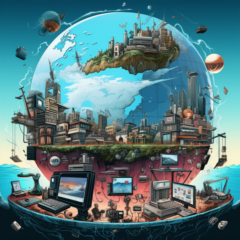
- Introduction
- 1. Mini-Motivational Activities
- 2. Focused Sprints
- 3. Guided Breaks for Clarity
- 4. Social Connection
- Conclusion
- Call to Action
Introduction
When working from home, staying motivated, focused, and on track can sometimes be challenging. Incorporating brief, effective strategies into your day can make a significant difference. Here are some quick 5-10 minute ideas that anyone, in any field, can use to enhance their day’s productivity.
1. Mini-Motivational Activities
Engaging in short, energizing activities can greatly boost your motivation levels.
- Quick Exercise: A brief workout, such as stretching or a set of push-ups, can energize your body and mind.
- Gratitude Journaling: Spend a few minutes writing down things you’re grateful for. This positive start can shift your mindset for the entire day.
2. Focused Sprints
Intense, concentrated bursts of work can dramatically increase your productivity.
- The Pomodoro Technique: Work intensely for 25 minutes, then take a 5-minute break. This method keeps your mind fresh and focused.
- Mindful Breathing: Before starting a task, take a 5-minute break to practice mindful breathing. This helps in centering your thoughts and reducing distractions.
3. Guided Breaks for Clarity
Regular, structured breaks are vital for maintaining mental clarity.
- Nature Gazing: Spend a few minutes looking out of a window, focusing on the natural scenery. It’s a great way to reset your mind.
- Guided Imagery: Use a short, guided imagery or meditation app session to clear your mind and refocus.
4. Social Connection
A brief check-in with a colleague or friend can enhance your mood and offer a fresh perspective.
- Virtual Coffee Break: A quick video call with a friend or colleague can provide a much-needed social break.
- Online Forums: Spend a few minutes engaging in an online forum related to your field. This can offer inspiration and a sense of community.
Conclusion
Integrating these short, simple activities into your work-from-home routine can lead to significant improvements in your day-to-day productivity and well-being. By regularly practicing these strategies, you can maintain high levels of motivation, focus, and guidance throughout your day.
Call to Action
Try incorporating one or more of these strategies into your daily routine and observe the difference they make










